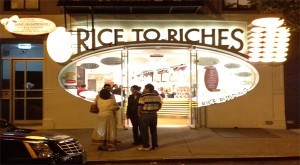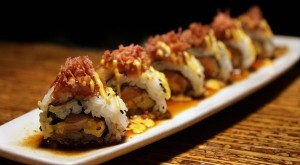As we approach the holidays and gather with friends and family, we take a look at the history of food and how it has been grown, persevered and prepared by Black people from slavery to present.
African Heritage…circa 300-1619
Most African men were farmers, cattle raisers and fishermen. Planting, sowing and harvesting crops were considered women’s work. Cooking was one of the most important skills a young girl needed to learn. One traditional dish called fufu was made of pounded yams. Fufu was served with soup, stew, roasted meat and different sauces. During this time in history, cooking was done over open pits. Africans were very skilled in roasting, frying, stewing, boiling and steaming their foods. Their native foods were yams,okra, watermelon, cassava, groundnuts, black-eyed peas and rice.
Indentured Servants and Slavery – 1619
In August, 1619, the first group of Africans landed in America at Jamestown, Virginia. These Africans were indentured servants. They gave up four to seven years of labor just to pay for transportation to America. Southern plantations consisted of Africans from many different tribal nations. These Africans made up the slave population in southern America. Verbal exchanges of recipes on these Southern plantations led to the development of an international African cooking style in America. The slaves enjoyed cooking pork, yams, sweet potatoes, hominy, corn, ashcakes, cabbage, hoecakes, collards and cowpeas. On these plantations, cooking was done on an open fireplace with large swing blackpots and big skillets.
Black cooking techniques and recipes were also influenced by Native American Indians all across the United States. When Africans were first brought to America in 1619, they lived on farm. In many areas, local Indians taught them how to hunt and cook with native plants. Indian cooking techniques were later introduced into the southern society by black American cooks. Dishes such as corn pudding, succotash, pumpkin pie, Brunswick Stew and hominy grits are a few examples of Native American dishes found in Black cooking.
American Revolution – 1776
Between 1773 and 1785 thousands of Africans were brought to America. They were brought ashore in Virgina, Georgia and the Carolinas (Sea Island). In America, slaves were cooks, servants and gardeners. They worked in the colonial kitchens and on the plantations as field hands. At the Big House, slaves cooked such foods as greens, succotash, corn pudding,spoonbread, corn pone and crab cakes. These foods were cooked on an open pit or fireplace. On the plantation, breakfast was an important and an early meal. Hoecakes and molasses were eaten as the slaves worked from sunup to sundown.
Reconstruction – 1865
Both the northern and the southern armies hired Black Americans as cooks. Most of the cooking throughout the South was done by black cooks. Slaves created their own recipes and made the best of hard times and scarce supplies. Cajun and creole cooking developed during this period. These foods included jambalaya, bread pudding, dirty rice, gumbo and red beans and rice. Cooking was done on a great big old fireplace with swing pots and skillets with legs.
The Great Migration 1900-1945
During this period, a large number of black Americans worked as cooks in private homes, shops, restaurants, schools, hotels and colleges. Many moved to such large cities as Chicago, New York, Ohio, Detroit and Pennsylvania to work. Black cooks, chefs and waiters also worked in pullman cars of the old railroads and on the steamboats. Many black Americans also started small businesses such as fish markets, barbecue and soul food restaurants throughout the United States. These establishments specialized in fried fish, homemade rolls, potato salad, turkey and dressing, fried pork chops, rice and gravy and southern fried chicken. Cooking was done on woodburning and gas stoves.
Civil Rights Movement 1965 – Present
In the early 60s and 70s, soul food, the traditional food of Black Americans, was very popular. Soul foods were candied yams, okra, fried chicken, pigs feet, chitlin’s, cornbread, collard greens with ham hocks and black-eyed peas. Today in the 90s, soul food preparation has changed. Black Americans are becoming increasingly health conscious, thus, they are avoiding foods with high levels of fat and cholesterol, and increasing their intake of fruit, vegetables and fiber. Black Americans are still in the kitchen cooking, but now they are owners and managers of restaurants. Today cooking is done on electric, gas and microwave stoves.
Source: Vanessa Roberts, The African-American Heritage Cookbook, 1993






1 Comment
This can be confusing as African American are the Aboriginal people called negros during that time. Which have a thought that the Siberias who came over the ice bridge actually taught the aboriginal people how to cook and yet today the cooking is not the same🤷🏾♀️ thank God that blood type can let you know who you really are in which years ago colonizers went by looks and not by bloodline ( blood types etc) now it’s different plus in many other nations ( particularly ones who pretends to be a people they are not) getting a blood type test is against the law in regions that were invaded. Just saying the truth needs to be told and all lies of reconstruction needs to end.again just saying.